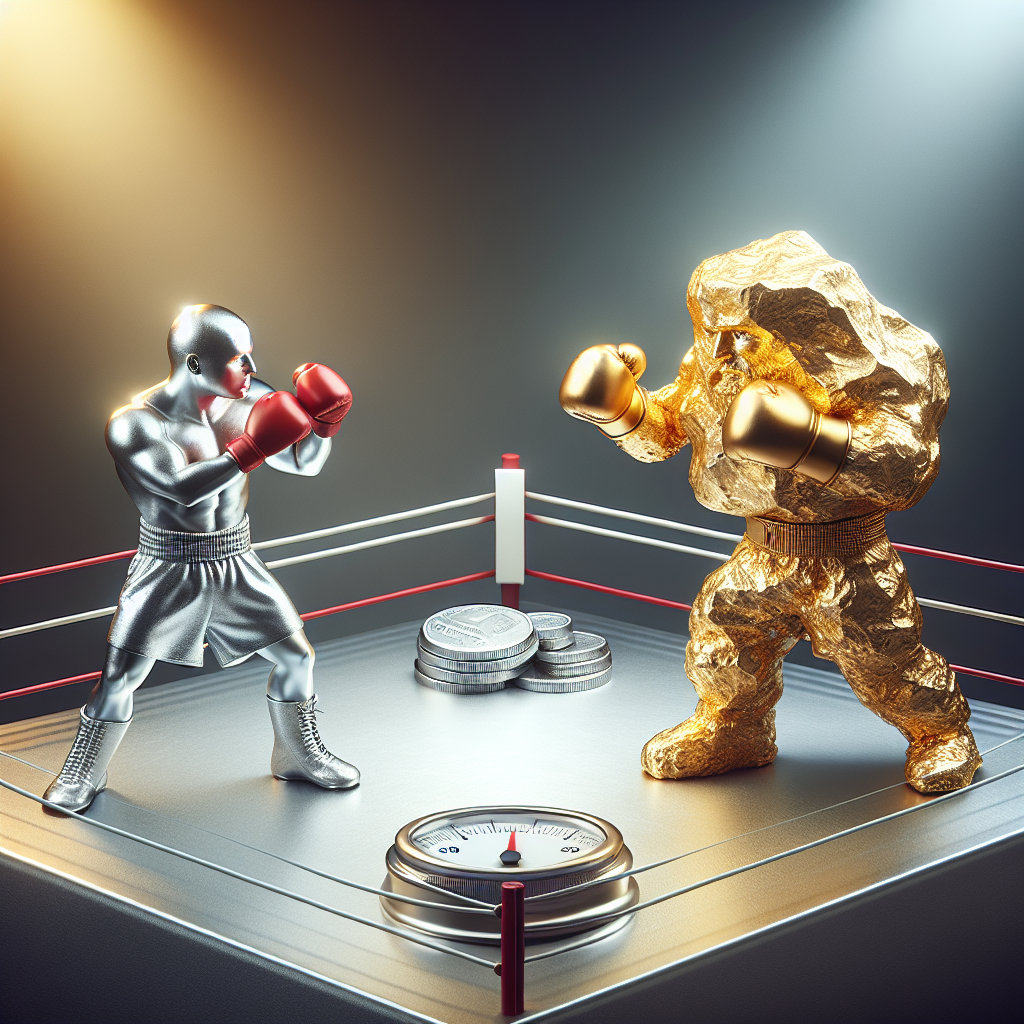This Indicator Says Silver is Undervalued: Understanding the Gold-Silver Ratio
As seasoned investors in commodities and resource-driven stocks know well, precious metals like gold and silver often exhibit a high degree of correlation, yet they can diverge in their price movements due to various market factors. Recent data suggests a significant disconnect between gold and silver prices, notably indicated by the historically high gold-silver ratio, which suggests that silver may be undervalued in the current economic climate.
The Current State of Gold and Silver
Gold has outperformed silver in recent weeks, achieving a remarkable climb of 5.6% in one week alone, contrasted with silver’s more modest increase of 3.9%. This discrepancy raises questions about the underlying demand dynamics and investment sentiment pertaining to both metals. Historically, the gold-silver ratio has averaged around 84.8 in 2023 to 2024, but has recently stabilized near 100, flashing indicators of a potential “sale” on silver.
According to experts like Peter Grant, VP and Senior Metals Strategist at Zaner Metals, renewed fears regarding economic stability have been a boon for gold, making it the preferred “hedge” against uncertainties while contributing to silver’s underperformance as an industrial metal. This dichotomy has stemmed from the dual nature of silver; while it carries value as a precious metal, it is increasingly swayed by industrial demand, making it more sensitive to economic fluctuations.
Silver Faces a Global Deficit
One key point to consider is that silver has experienced a global structural market deficit for five consecutive years. The Silver Institute projects that global demand will continue to exceed supply in 2025, creating a bullish environment for silver prices in the medium to long term. Analysts like Peter Spina, founder of a prominent investment website, suggest that this ongoing deficit hints at a potential upside for silver, particularly as prices stabilize or dip, creating an attractive buying opportunity for those with patience.
The Implications of the Gold-Silver Ratio
Dissecting the gold-silver ratio reveals more than just a mathematical distinction; it’s a reflection of the market’s perception of value. Experts forecast that the ratio will likely remain between 100 and 110 due to the prevailing global macroeconomic uncertainties driven by factors like U.S. tariffs. This prolongs silver’s struggle to catch up to gold, especially in periods of heightened economic risk.
However, some analysts maintain that if risk appetite returns to the market amid reduced trade tensions, silver could outperform its golden counterpart. BNP Paribas anticipates an average silver price of $33.20 an ounce for 2025, but warns that continued trade disputes could dampen this outlook. In the current scenario, the higher the ratio, the more it signals to savvy investors that silver represents a bargain relative to gold.
Market Sentiments and Future Trends
Investors should also consider the recent volatility where silver’s price movements have demonstrated a closer correlation to stock markets than gold has, which could signify a shift in investment dynamics. The ongoing “Sell America” trend and the recent downgrade of the U.S. government’s credit rating have bolstered gold’s appeal as a safe haven, but it could also usher in future blockades for silver.
Notably, the connection between silver and copper, as industrial metals with shared supply and demand dynamics, further complicates the outlook. With an expected surplus in global copper production, the byproduct nature of silver mining could amplify supply constraints, potentially pushing silver prices higher and narrowing the gold-silver ratio back toward its historical norm of around 68 ounces of silver per ounce of gold.
Conclusion: A Tactical Approach to Commodities Investment
The current landscape suggests that silver may represent an interesting opportunity for investors seeking to diversify their portfolios. With widespread recognition of a global deficit in silver and the gold-silver ratio indicating undervaluation, now might be the time for a tactical investment in this precious metal. Nonetheless, the risks tied to economic uncertainties and industrial demand must not be ignored. For serious investors focused on commodities and resource-driven stocks, silver warrants careful consideration as both a hedge and potential growth asset in an evolving marketplace.
